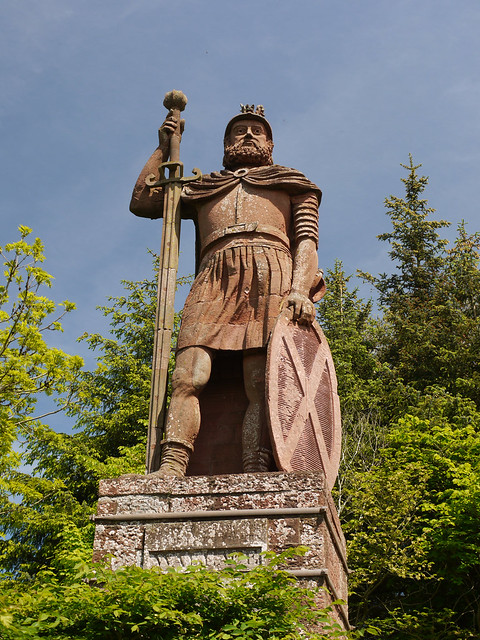
William Wallace, one of Scotland’s greatest national heroes, is renowned for his role in the First War of Scottish Independence against English rule. His life story, blending history and legend, is a compelling tale of bravery, defiance, and ultimate sacrifice.
Early Life
Born around 1270 in Elderslie, Renfrewshire, William Wallace was the son of Sir Malcolm Wallace, a minor nobleman, and his wife. Although details of his early life are sparse and often mingled with folklore, it is believed that Wallace received a rudimentary education and training in the arts of war and leadership, typical for a young man of his standing.
Rise to Prominence
Wallace’s rise to prominence began in 1297, amid growing resentment against English domination imposed by King Edward I of England. According to legend, his involvement in the rebellion was sparked by a personal vendetta after English soldiers killed his wife, Marion Braidfute. While this story may be more myth than fact, it underscores the personal and national grievances that fueled his resistance.
The Rebellion of 1297
Wallace’s first significant act of defiance was the killing of the English Sheriff of Lanark, William Heselrig, in May 1297. This bold act ignited Scottish resistance and established Wallace as a fierce and uncompromising opponent of English rule. He then gathered a band of followers, launching a guerrilla campaign that relied on surprise attacks and intimate knowledge of the local terrain to combat the superior English forces.
Battle of Stirling Bridge
The Battle of Stirling Bridge on September 11, 1297, stands as Wallace’s most notable military achievement. Alongside Andrew Moray, Wallace led a smaller Scottish force to a stunning victory against a much larger English army. The Scots cleverly used the narrow bridge and surrounding terrain to their advantage, attacking the English as they crossed. This victory not only boosted Scottish morale but also solidified Wallace’s status as a key leader in the fight for independence.
Guardian of Scotland
In the wake of this triumph, Wallace was appointed Guardian of Scotland, becoming the military leader and de facto head of state. His tenure was marked by efforts to organize Scotland’s defense and governance, though he faced significant challenges, including limited resources and internal divisions among the Scottish nobility.


Battle of Falkirk and Decline
Wallace’s fortunes changed at the Battle of Falkirk on July 22, 1298. King Edward I personally led the English forces, employing longbowmen to devastating effect against the Scottish schiltrons (tight formations of spearmen). The Scots were defeated, and Wallace’s reputation suffered. He resigned as Guardian of Scotland, with Robert the Bruce and John Comyn taking over the leadership of the resistance.
Capture and Execution
Despite the setback at Falkirk, Wallace continued to fight for Scottish independence. However, his activities during this period remain somewhat obscure. In August 1305, Wallace was betrayed and captured near Glasgow. He was taken to London, where he faced a farcical trial for treason. Wallace argued that he owed no allegiance to the English king, but he was nonetheless found guilty and sentenced to death. On August 23, 1305, Wallace was brutally executed, being hanged, drawn, and quartered.
Legacy
William Wallace’s legacy endures as a symbol of Scottish nationalism and resistance. His life and death inspired many and became a rallying cry for future generations seeking freedom. In the centuries following his death, Wallace’s story has been immortalized in ballads, poems, and historical works. The 1995 film “Braveheart,” while not historically accurate, further cemented his status as a cultural icon.
The National Wallace Monument near Stirling stands as a testament to his enduring legacy, commemorating a man who fought fiercely for his country’s independence. Wallace’s struggle is emblematic of the broader Scottish quest for self-determination and remains an integral part of Scotland’s national identity.
William Wallace’s story is a powerful reminder of the impact one individual can have in the fight for freedom and justice. His courage and determination continue to inspire people around the world, making his tale one of the most enduring in Scottish history.


